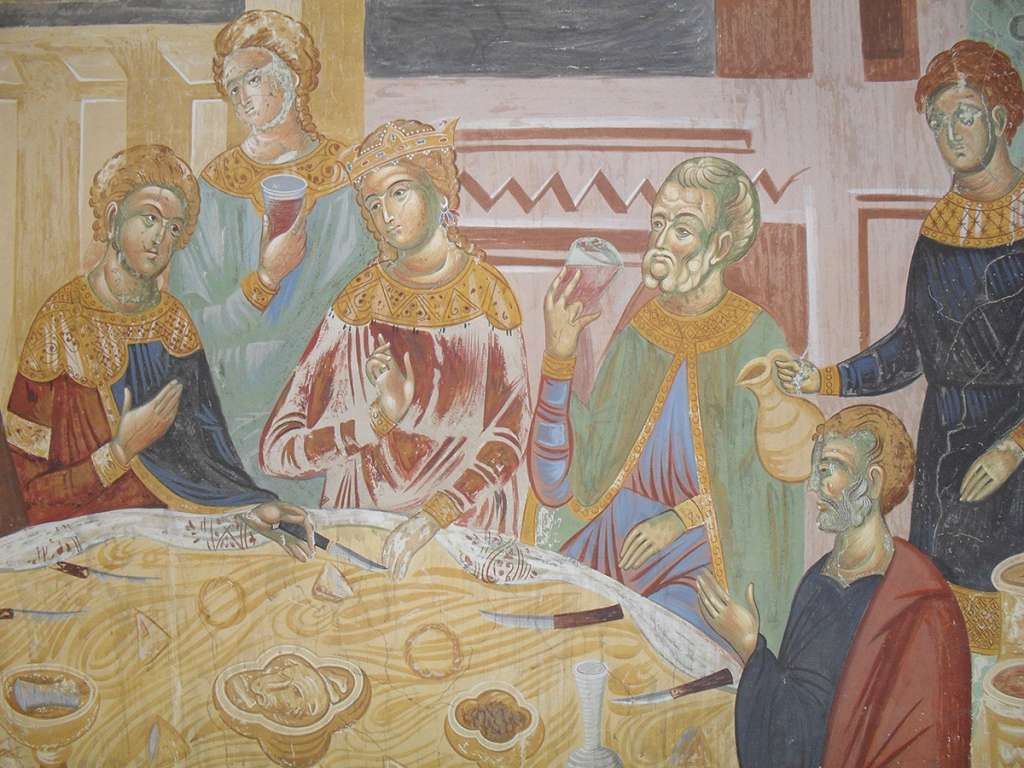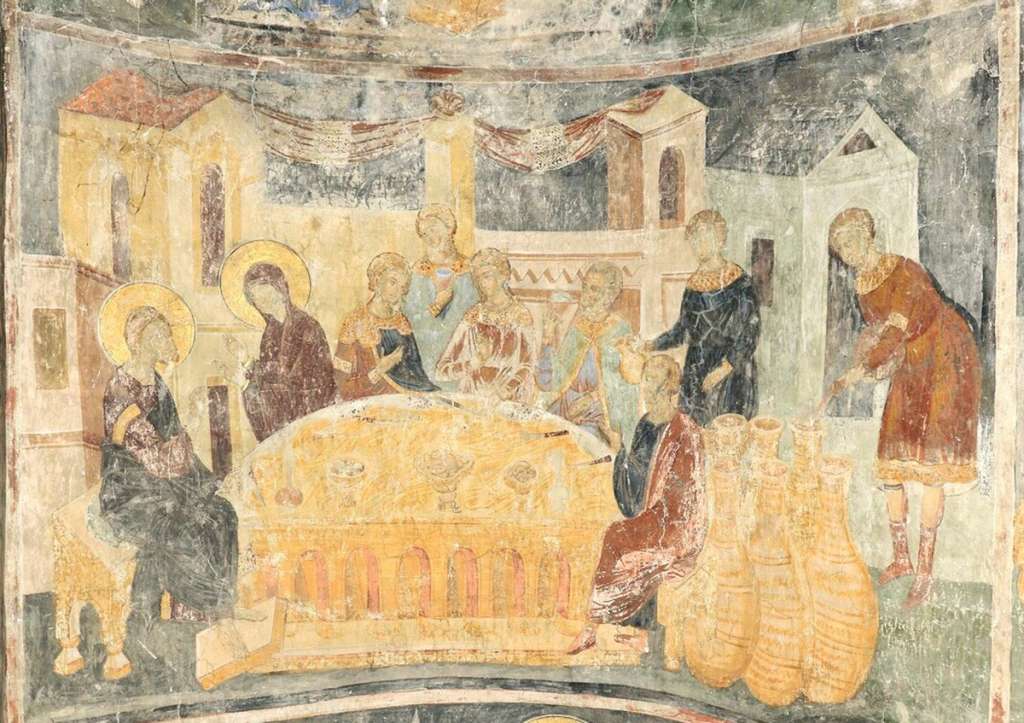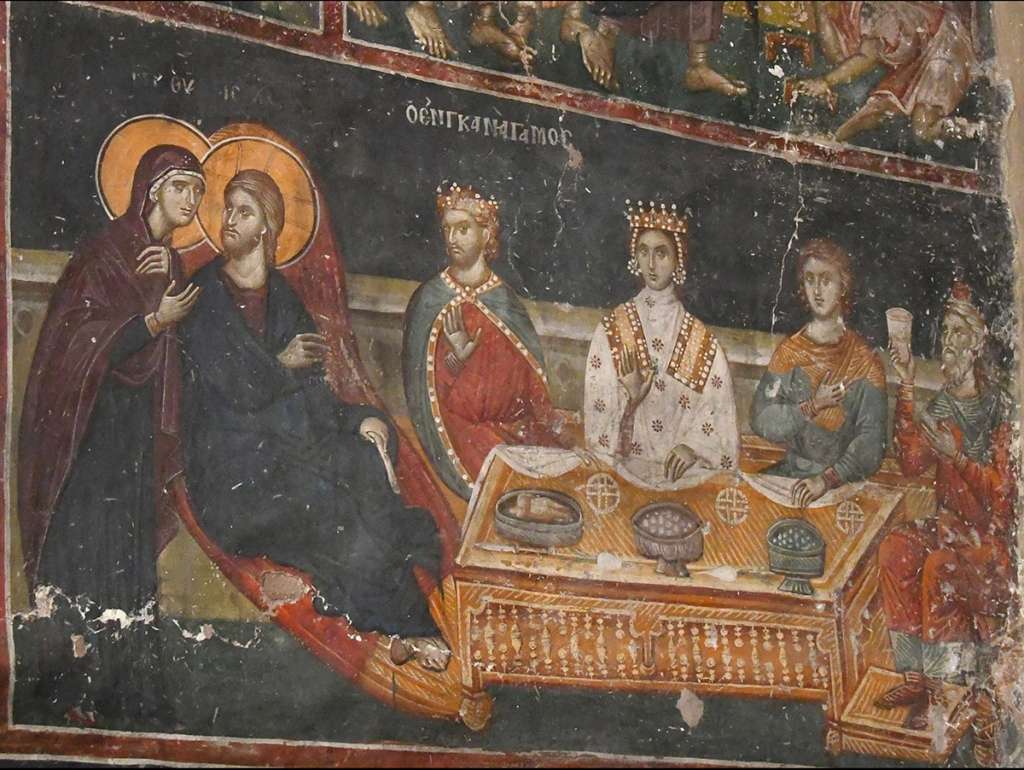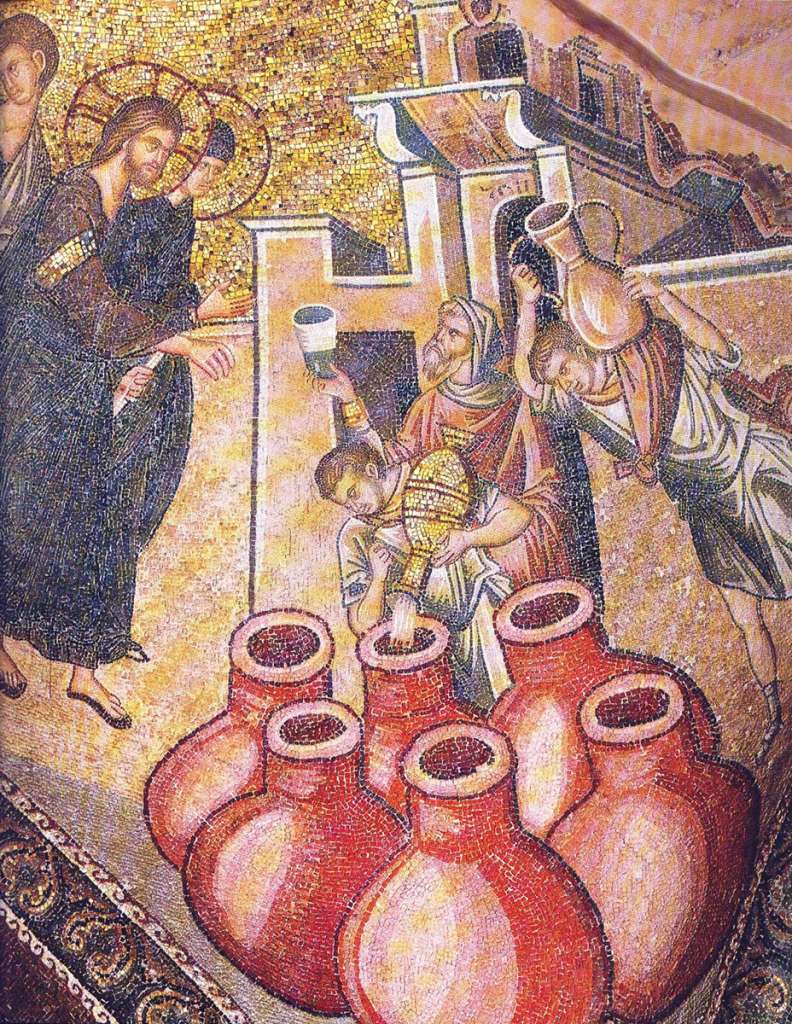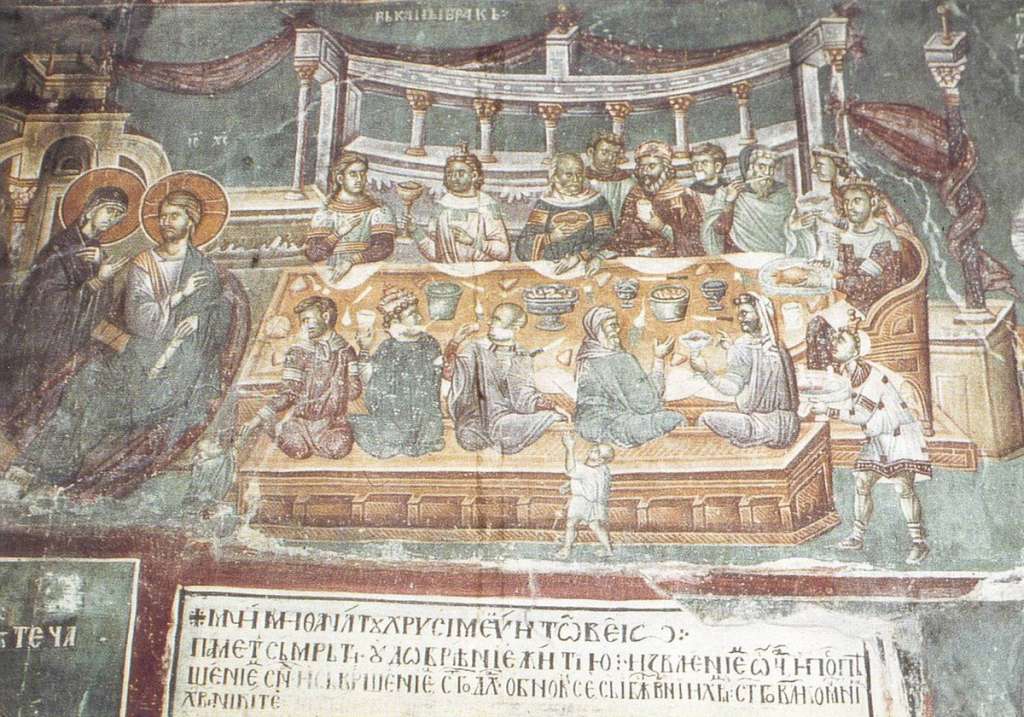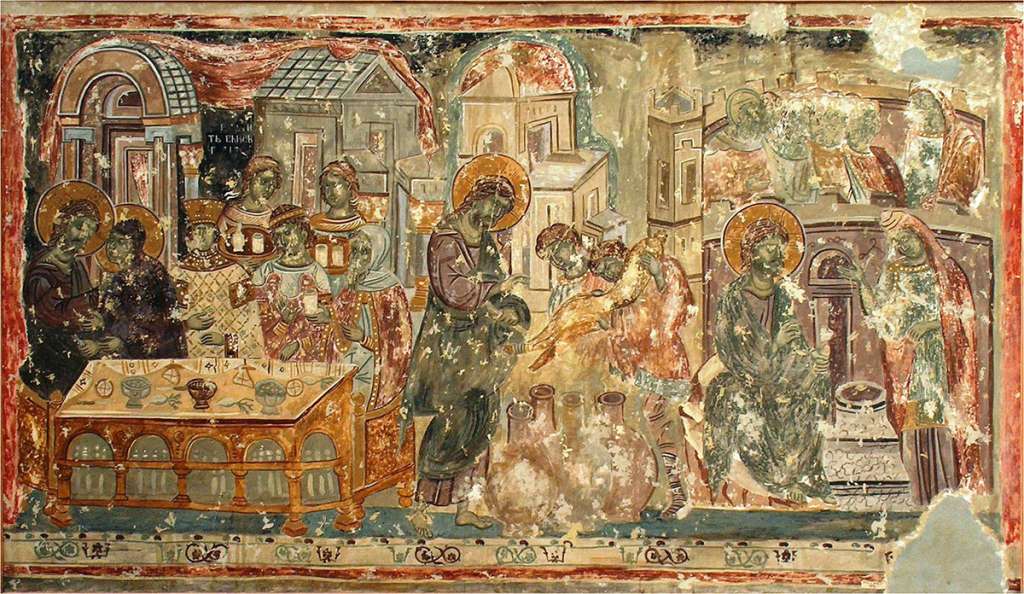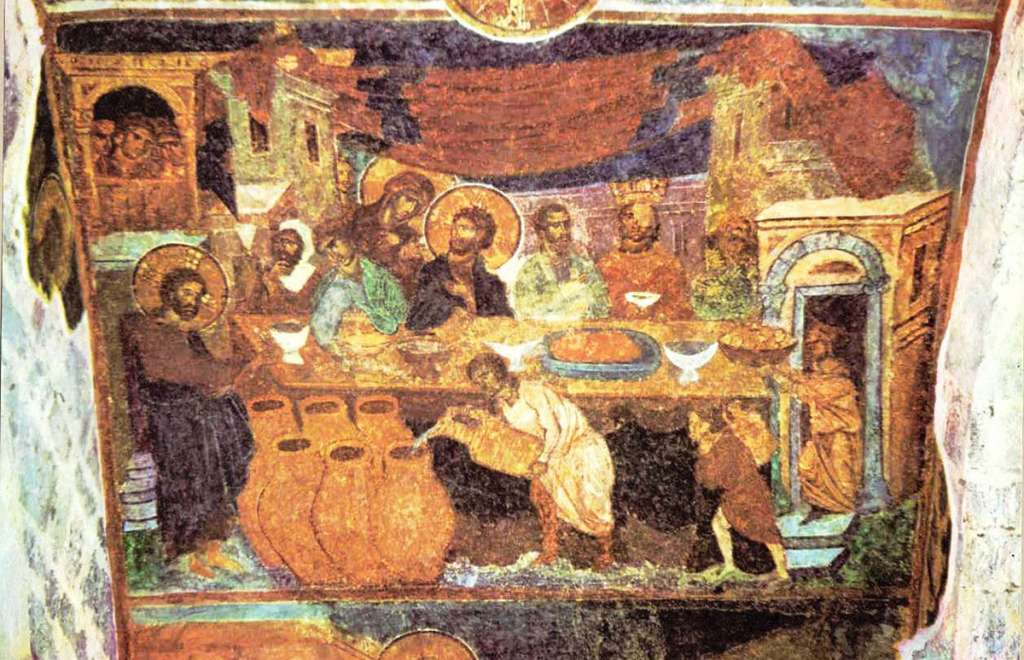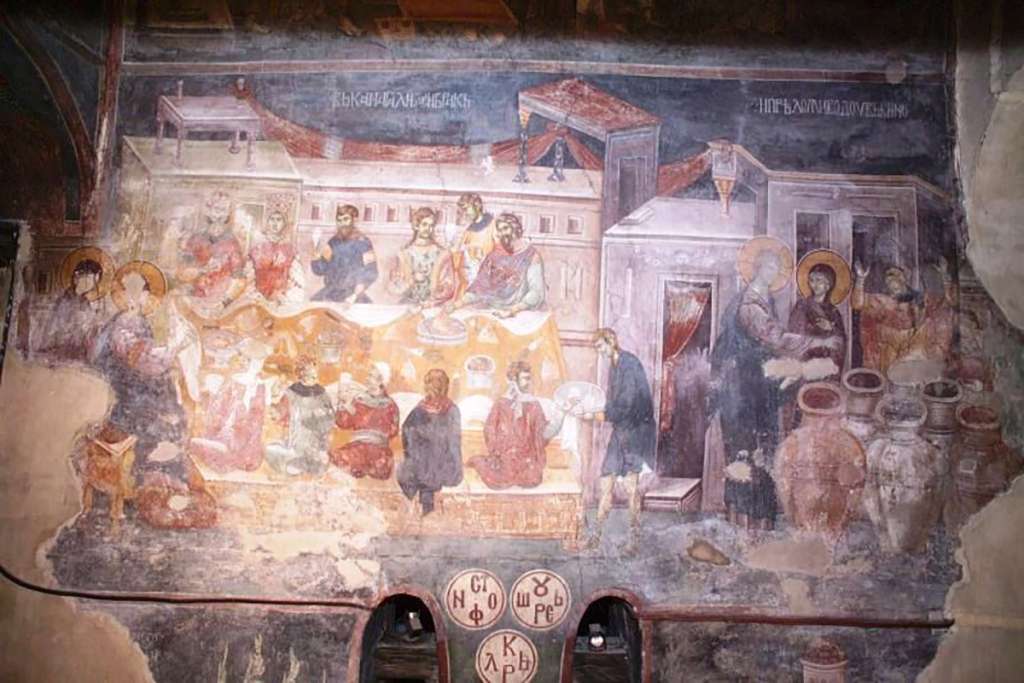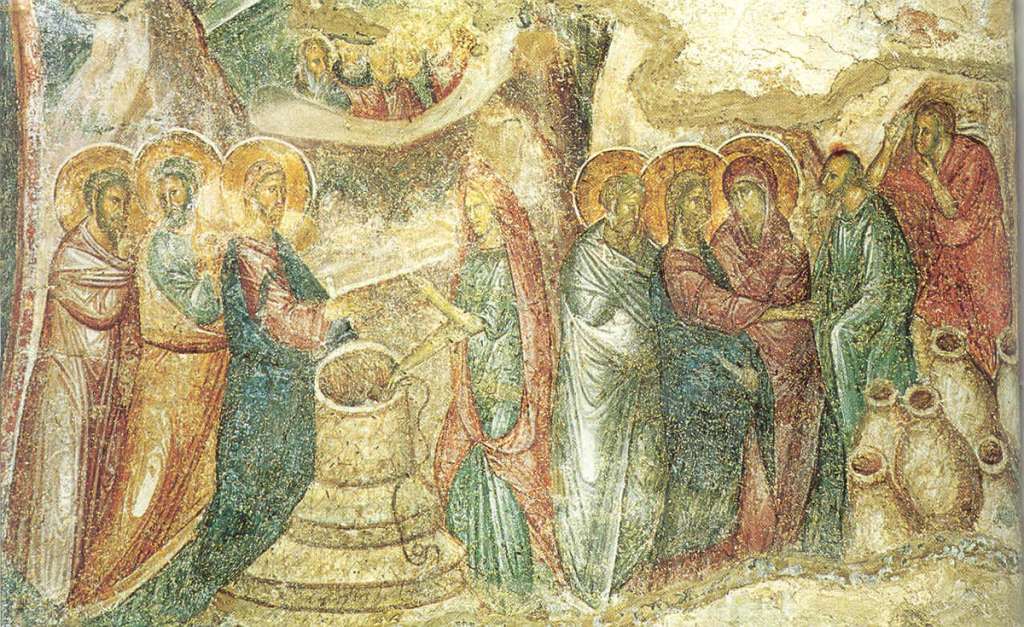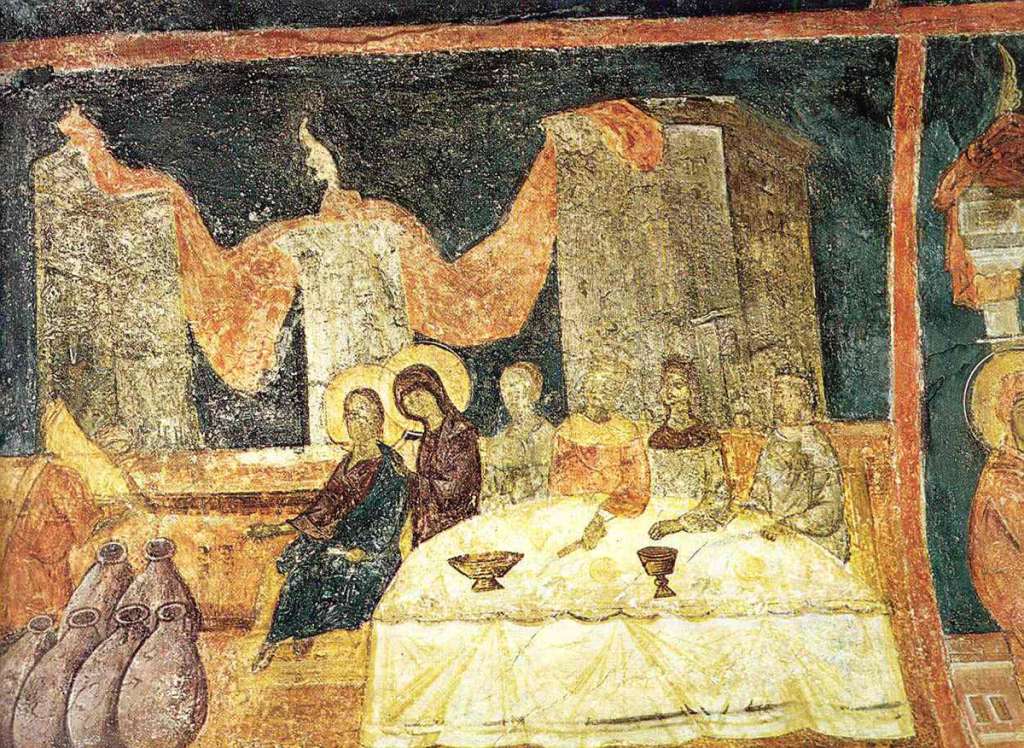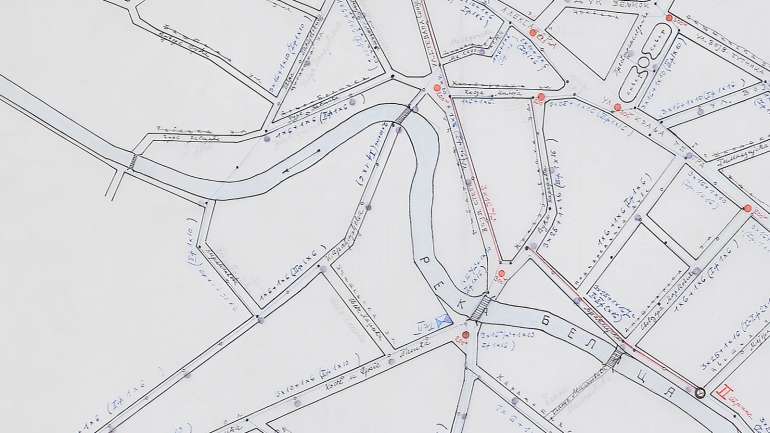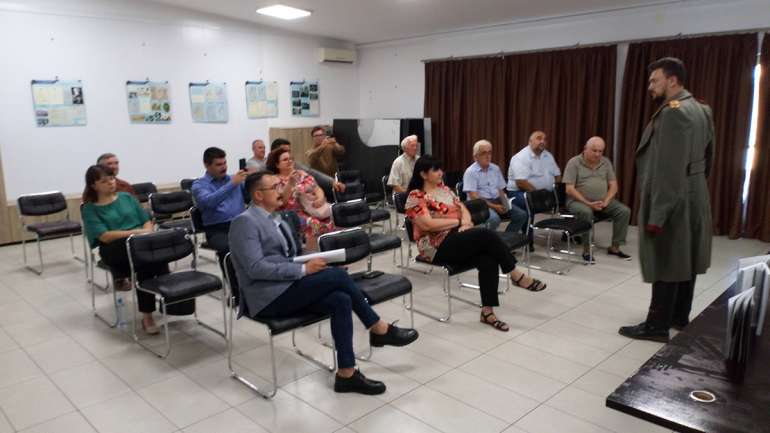By: Branislav Cvetković, museum advisor
Collection of Fresco Copies contains one that stands out among thousands of medieval wall paintings. This part of Kalenić program from ca 1420, painted by Radoslav, is the central segment of the most famous fresco in Kalenić, Wedding at Cana. The copy was made in 1984 by Časlav Colić, a renowned copyist painter. The iconography in Kalenić is original in many respects, from the very format of frescoes to their numbers, so the cycles of miracles and of the resurrection gospels have seven scenes each. The symbolism of that number among Christians had special significance, which led to visual asymmetry of frescoes in the nave and narthex, while their different format conditioned their emphasis and special setting.
Wedding at Cana, the first miracle of Jesus, is highlighted by its placement on the east side of the south choir, and its importance is revealed by its unique iconography, painter’s skills and superb aesthetics. The unusual gesture of the groom stabbing left hand of the bride with a decorated knife is sometimes interpreted as trace of obsolete pagan ritual of fraternization or a primitive blood myth. However, that gesture is an allusion to Eucharistic symbol of bloodless sacrifice, because during prothesis service, the priest, while preparing prosphora particles, uses liturgical spear in form of a short dagger. In addition, symbolism of that miracle of Christ was well known to the medieval faithful, being related to the sacramental importance of the marriage institution, because during wedding ceremony, the wine that the newlyweds drink is compared to the wine that Jesus miraculously restored in Cana.
Another peculiarity of the fresco is unusual form of the wedding table, consisted of a row of 7 columns with arches. It is an allusion to the Table of Wisdom and Solomon’s temple, symbols of the Virgin, and reason for this is proximity of altar, as well as fact that the quote from Solomon’s biblical book: Wisdom has built her house, she has set up its seven pillars, is read as paroimia on the Annunciation feast, which is painted near the altar. Symbol of table as a temple-tabernacle is interpreted in Sermon of Epiphanius of Cyprus: the table is prepared, the meals are cooked, the eternal abodes and homes are ready, the treasuries of the blessed have been opened, heavenly kingdom was prepared before all ages. The arcade with columns and semi-circular arches also has traditional meaning of heavenly dwellings for the righteous. The originality of the structure, symbolism, and beauty of this fresco come to full expression if compared with depictions of the same theme from other medieval churches not only in Serbia, but throughout the Balkans, from Constantinople and Thessaloniki to Mystras in the Peloponnese.
